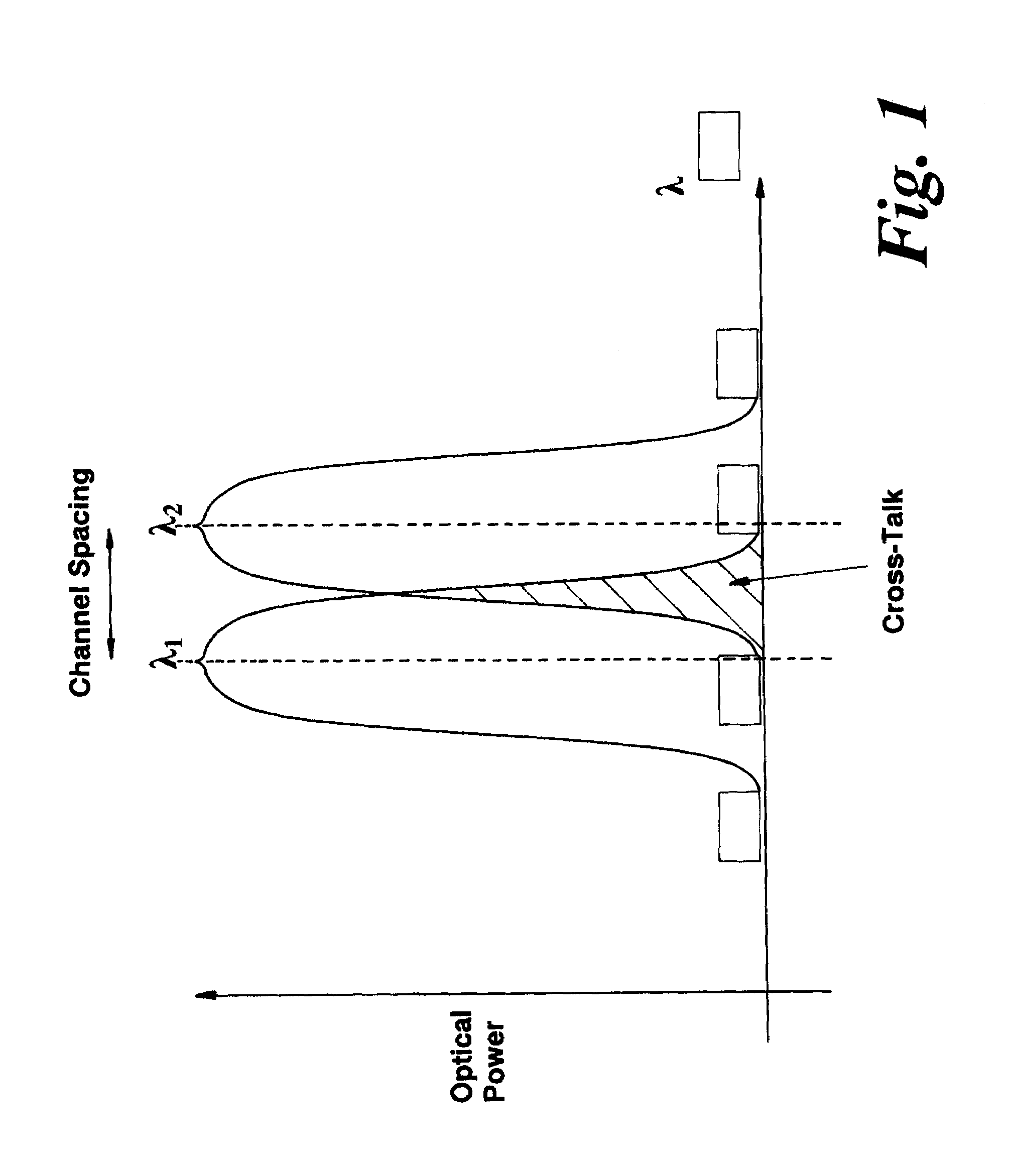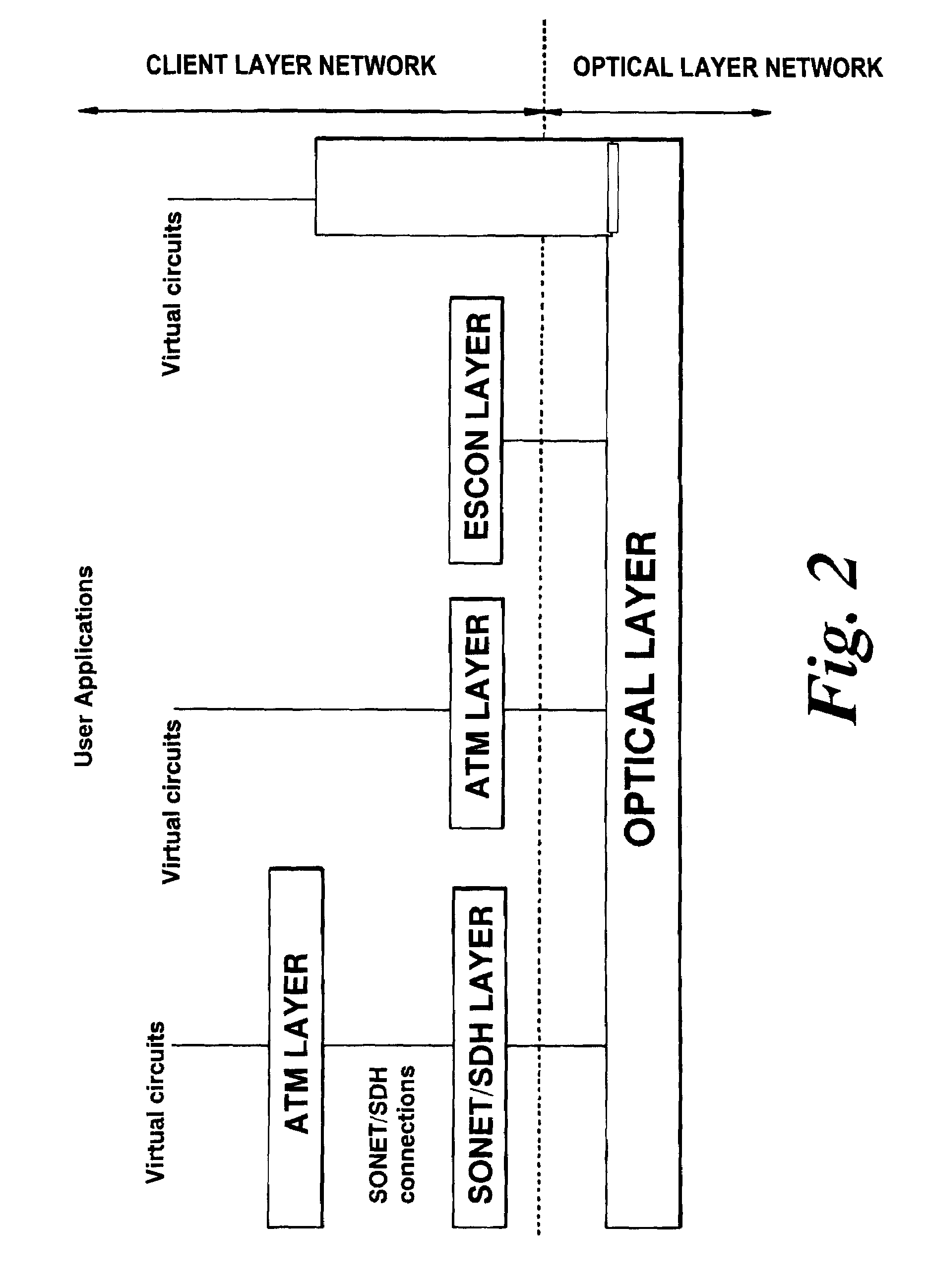Optical protection scheme
a protection scheme and optical technology, applied in the field of optical protection schemes, can solve the problems of increasing complexity and difficulty in managing the communication network, unpractical centralised management, and affecting and achieve the effect of reducing the level of redundancy
- Summary
- Abstract
- Description
- Claims
- Application Information
AI Technical Summary
Benefits of technology
Problems solved by technology
Method used
Image
Examples
Embodiment Construction
[0077]Any range or device value given herein may be extended or altered without losing the effect sought, as will be apparent to the skilled person for an understanding of the teachings herein. The best mode of the invention as apparent to the inventor will now be described with reference to the accompanying drawings.
[0078]FIG. 1 of the accompanying drawings shows schematically how channels provided in an optical layer network, where traffic is wavelength division multiplexed, may experience cross-talk if the channel margins become too narrow. In FIG. 1, a first channel λ1, and a second channel λ2 are separated by a narrow wavelength band or channel margin. Irregularities in transmission media, or regenerative processes, filtering etc., may all cause distortion of the channels. Chromatic distortion which broadens the channels can generated significant cross-talk, which leads to transmission errors being detected when the optical signals are converted into electronic signals at node...
PUM
 Login to View More
Login to View More Abstract
Description
Claims
Application Information
 Login to View More
Login to View More - R&D
- Intellectual Property
- Life Sciences
- Materials
- Tech Scout
- Unparalleled Data Quality
- Higher Quality Content
- 60% Fewer Hallucinations
Browse by: Latest US Patents, China's latest patents, Technical Efficacy Thesaurus, Application Domain, Technology Topic, Popular Technical Reports.
© 2025 PatSnap. All rights reserved.Legal|Privacy policy|Modern Slavery Act Transparency Statement|Sitemap|About US| Contact US: help@patsnap.com



